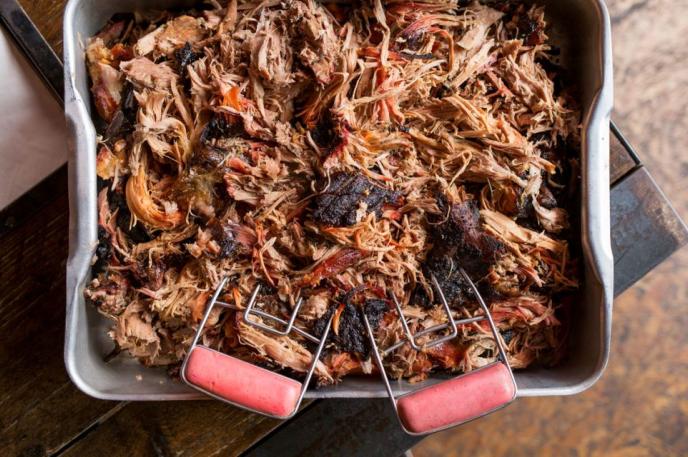EpicFest
Amber Smith
Nora Shalaway Carpenter
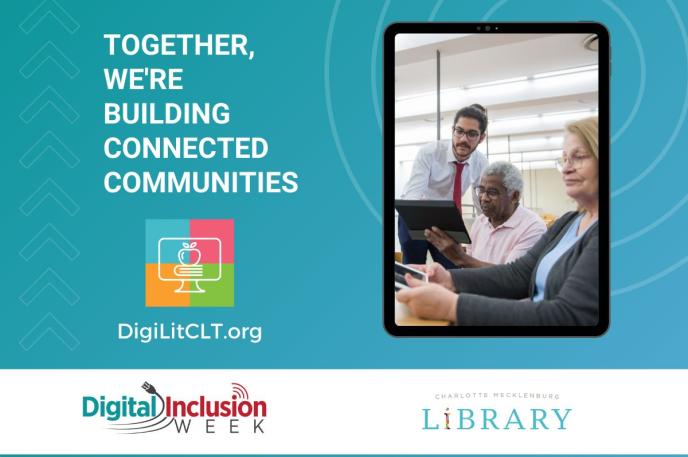
Digital Inclusion Week at the Library
October 4, 2023
*Written by Erin Kisiel*
Happy Digital Inclusion Week!
This week, October 2-6, is an annual week of awareness, recognition, and celebration. This time is dedicated to increasing community engagement and awareness about digital equity.
There are a lot of new terms used during Digital Inclusion Week so here are some definitions:
Digital Equity: Every person deserves to have equal access to digital technologies, including internet access. The Internet should be a right, not a privilege. We’ll have achieved digital equity when every person and community has access to the necessary technology to thrive in our society, democracy, and economy. Everyone should be able to access the internet and technology and have the ability to use it.
Digital Inclusion: The steps we take to achieve digital equity.
The five elements of digital inclusion are:
1) Affordable, robust broadband internet service
2) Internet-enabled devices that meet the needs of the user
3) Access to digital literacy training;
4) Quality technical support; and
5) Applications and online content designed to enable and encourage self-sufficiency, participation and collaboration.
Digital Literacy: Digital Literacy is the ability to use information and communication technologies to find, evaluate, create, and communicate information, requiring both cognitive and technical skills.
Digital Divide: The gap between demographics and regions that have access to modern information and communications technology and those that don’t or have restricted access.
Digital inclusion is vital to education, job opportunities, and vital services. It gives a voice to people who are being left out. Building connected communities is key for everyone to thrive.
The Library is working towards digital equity and inclusion. Our digital literacy brand: ‘DigiLit’ provides a range of technology training options. Whether you are just getting started with learning technology or looking to improve your skills, we have something for you.
We offer a variety of learning paths for every type of user:
-
Workplace Tools - Practice the skills you need to succeed in the job market
-
Basic Digital Skills - Learn the basics of using technology and accessing the internet
-
Social Media - Learn to use social media safely and connect with friends and family
-
Mobile Devices - Learn to download apps, access the internet, and even read books from your device
To find out more about DigiLit, please visit: DigiLitCLT.org
At its core, #digitalinclusion is about creating a society where every individual can fully participate in the digital world. It's a journey toward equality, access, empowerment, and a brighter future!
Sources
https://ndia.my.canva.site/diw23
https://www.digitalinclusion.org/digital-inclusion-week-2023/
*Written by Sydney Carroll of the Robinson-Spangler Carolina Room*
As a native-Virginian, I quickly learned that BBQ is the root of a lot of disagreement in the Carolinas. There are endless "rights and wrongs” to BBQ preparation, sauce, how the meat is smoked, what side dishes to serve... the list goes on.
It’s a fascinating discussion that all Carolinians, North and South, should contribute to. Read on to learn about the history of barbecue in the Carolinas and some fun facts to share at your next barbecue.
How did BBQ find its way to the Carolinas?
BBQ was “discovered” in North Carolina in the late 16th century by Sir Walter Raleigh. In 1585, Raleigh sent men to the coast of present-day North Carolina. While there, John White sketched Croatan Indians “broiling their fish over the flame—they took great heed that they bee not burnt”. What White witnessed was the Croatans using a “Barbacoa”, a framework of sticks that supported meat over a fire. Barbacoas were used by the Spanish in the Caribbean after they saw locals using the contraption to smoke their meat.
Photo courtesy of Holy Smoke: The Big Book of North Carolina Barbecue
Historians believe that German settlers who traveled via Great Wagon Road during the mid-to late-18th century from Pennsylvania influenced the style of barbecue in the North Carolina Piedmont. Catawba College history professor, Gary Freeze, developed this theory on the basis that Pennsylvania Germans barbecued the shoulder of the pig and braised it in a fruit-flavored liquid like the Lexington style North Carolinians pride themselves on today. Freeze further argues that early prominent barbecue-ers had German names (e.g., Weaver, Ridenhour, Swicegood), and that some of the Piedmont’s earliest barbecuing occurred in German cotton mill villages.
North Carolina: Home to the “Original” BBQ Recipe
According to Holy Smoke: The Big Book of North Carolina Barbecue, BBQ in North Carolina must meet these three qualifications:
-
The meat must be barbecued, meaning cooked at a low temperature for a long time with heat and smoke flavoring the meat from a fire of hardwood and/or hardwood coals.
-
The meat must be pork (whole hog, shoulder, or occasionally ham).
-
The meat is always served with a thin vinegar-based sauce.
Photo courtesy of Chairgatin
There are two main styles of BBQ in North Carolina—Eastern and Lexington (“Piedmont”). Eastern-style BBQ uses the whole-hog (“every part of the hog but the squeal”) with a lemon juice or vinegar, pepper-based sauce. Eastern style incorporates zero tomatoes in its recipe. Food critics are careful to say it is the “truest” form of BBQ, but many refer to Eastern Style as the “original” recipe [Our State article].
Piedmont-style became popular in the WWI era and uses meat from the pork shoulder with vinegar, ketchup, and spice-based sauce. Five men of German descent are credited with the adaptation of the Eastern-style recipe.
Sauce is another point of contention in North Carolina. The ingredients for the standard NC BBQ sauce vary from family to family, but the “official” recipe is along the lines of this description found in Martha McCulloch-Williams' recollections:
“Two pounds of sweet lard, melted in a brass kettle, with one pound beaten, not ground, pepper a pint of small fiery red peppers, nubbed and stewed soft in water to barely cover, a spoonful of herbs in powder- he would never tell what they were [of course!], -- and a quart and pint of the strongest apple vinegar, with a little salt.” - Holy Smoke: The Big Book of North Carolina Barbecue
South Carolina: Home to the Four Sauces
South Carolina also believes that barbecue was “founded” in the Palmetto State, so I guess we will never truly know which Carolina BBQ calls home. We do know that South Carolina features all four sauces throughout the state, a trait they pride themselves on.
Photo courtesy of Discover South Carolina
1) Mustard: Found throughout the midland part of the state down toward the lower coastline. Distinct tasting sauce traced back to German settlers.
2) Heavy Tomato: Found in the western and northwestern part of the state. Popularly known and sold in grocery stores (Kraft, Sweet Baby Rays, etc.)
3) Light Tomato: Found in the Pee Dee and upper part of the state. A light mix of the vinegar/pepper sauce with ketchup or tomato added.
4) Vinegar + Pepper: Found along the coast. Spicy vinegar and pepper sauce.
Photo courtesy of Charleston City Paper.
So, what’s up with the tomatoes, and why is there so much controversy around adding them to BBQ sauce? South Carolina farmers began growing “love apples” in the 18th century and food historians believe that German settlers began to add ketchup to the Eastern-style BBQ. The addition of the sugary ketchup made the BBQ recipes closer to the sweet-sour taste that is common in German cooking.
The only thing both Carolinas agree on? The meat must be smoked.
“You can put barbecue sauce on it and call it barbecue. You can cook it in a Crock-Pot and put sauce on it and call it barbecue. But it’s not. Now, I get chastised on that all the time—about being old-school and a purist and all that. All I’m saying is, there’s a totally different flavor when you’ve got the fat of that meat dripping onto live coals. The smoke it creates to season that pig—that makes the difference.” -Jim Early, Charlotte Magazine
We know that Carolinians eat BBQ, but how do we celebrate the dish?
Photo courtesy of Lexington Barbecue Festival, 2019.
The Carolinas celebrate BBQ big time. Lexington, North Carolina throws a huge BBQ Festival every October. Lexington felt so strongly about hosting the official BBQ festival that they even submitted a House Bill to the General Assembly in 2005. Two days later, the bill was approved and the Lexington Barbecue Festival was adopted as the state’s official BBQ festival. South Carolina also celebrates BBQ with a variety of festivals.
If you want to decide if North Carolina or South Carolina BBQ is supreme, take a long drive along the Historic BBQ trails. You can always use the Carolina Room’s cookbooks to find mouthwatering BBQ recipes to try at home, too!
References
Garner, Bob. “Bob Garner’s Book of Barbecue: North Carolina’s Favorite Food.” Winston-Salem, NC: John F. Blair, 2012.
Garner, Bob. “North Carolina Barbecue: Flavored by time.” Winston-Salem, NC: John F. Blair, 1996.
Lacour, Greg. “What’s Our Barbecue Story?” Charlotte Magazine. June 2019. Accessed August 2019. http://www.charlottemagazine.com/Charlotte-Magazine/June-2019/Our-Barbecue-Story/
Quine, Katie. “Why Are There Two Styles of NC Barbecue?” Our State. May 2015. Accessed August 2019. https://www.ourstate.com/nc-barbecue-styles/
Reed, John Shelton. “Holy Smoke: The Big Book of North Carolina Barbecue.” The University of North Carolina Press, 2008.
"South Carolina Barbecue.” Discover South Carolina. https://discoversouthcarolina.com/barbecue
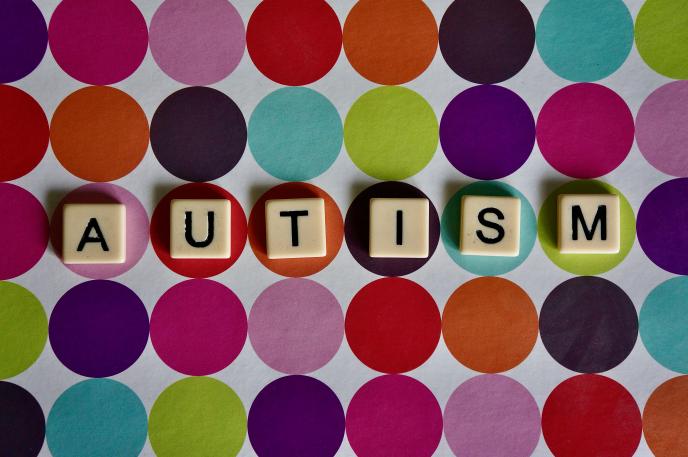
Autism Acceptance Month – the joys of Adaptive programming
March 24, 2022
April is Autism Acceptance Month and the Library has an array of resources to explore as we work towards developing a more inclusive community. I have had the privilege of learning how to facilitate meaningful programs for neurodiverse populations, which is by far my favorite part of my job. Neurodiversity is defined as “the range of differences in individual brain function and behavioral traits, regarded as part of normal variation in the human population” and a term that reflects personal preference. To me, neurodiversity is when we value and accept (not tolerate) the many ways we can process life.
Charlotte Mecklenburg Library has dedicated its mission to developing inclusive services, and talented staff have pioneered Library services that are now replicated around the world – and the ripple effect of that sharing of knowledge has started to close the gap on inclusion. From increasing accessibility in our branches, developing an accessible digital collection, procuring adaptive technologies and facilitating adaptive & sensory programming, we strive to be an agency that serves with intention. Through a partnership with The Autism Society of Charlotte, the Library has developed a robust Autism Resource Collection located at the Spangler Library in ImaginOn.
The biggest byproduct of our mission is the countless opportunities we, as Library staff, have to celebrate neurodiversity. The Exceptional Experiences team identifies areas of advocacy and develops programming partnerships that extend the reach of the Library beyond our walls and increase inclusion in our community. We have had the utmost pleasure of developing partnerships with the Autism Society of North Carolina, Greater Down Syndrome Association of Charlotte, Parks & Recreation Therapeutic services and many other agencies. Our desire, joy and goal is developing strong connections with the community-at-large, housing resources that can serve everyone and making sure our program participants know they are valued stakeholders.
For information relating to adaptive & sensory programming at the Library, see below:
Adaptive & Sensory Programming
Children’s Book Recommendations and Resources for Autism Acceptance Month:
--
This blog was written by Amrita Patel, outreach specialist for Charlotte Mecklenburg Library.

Celebrate reading beyond National Read Across America Day with Charlotte Mecklenburg Library
March 25, 2022
Calling all readers! Did you miss National Read Across America Day on March 2? Don't fret, we still have a list of recommended reads to get you through the months ahead. Before we share the titles, let's explore a bit about the history of National Read Across America Day.
The holiday, launched in 1998 by the National Education Association, commemorates the birthday of beloved children’s book author, Dr. Seuss, and celebrates the joys of reading. It’s a special day set aside to “stop, drop, and READ.” Dr. Seuss was well known for his love of rhymes and rhyming is one of the building blocks to learning how to read. Although the day has passed, we always encourage reading as literacy is a building block to a life well-lived. Be sure to grab your favorite Dr. Seuss book and snuggle up for an adventure.
With younger readers doing a read aloud, or taking turns reading aloud, or having dedicated Sustained Silent Reading (SSR) time is beneficial. While you can employ these techniques at any time, we hope you'll get the chance to participate in the next National Read Across America Day! It’s a day for modeling, discussing and connecting with others over a shared love of reading. You could even be playful (like Dr. Seuss)! Serve green eggs and ham or dim the lights and read with a flashlight! If you have a reluctant reader, think outside of the box (like Dr. Seuss)! Instead of reading a book, try some of these interactive alternatives:
- Recipes
- How-to-manuals
- Cartoons or comic books
- Page-a-day calendars
- Children’s magazines or newspapers
- Reader’s Theater
Looking to expand your reading horizons? You could also branch out and try some Dr. Seuss-like children’s books. Here are some popular classics and contemporary options:
1. A Bad Case of Stripes by David Shannon
Originally published in 1998, “A Bad Case of Stripes” follows Camilla Cream, a young girl who loves lima beans but refuses to eat them in order to fit in with her fellow classmates, who don’t like them at all. But all that worrying about fitting in causes her to develop a case of the stripes, with her body covered in different colored stripes. It’s recommended for children between the ages of four to eight.
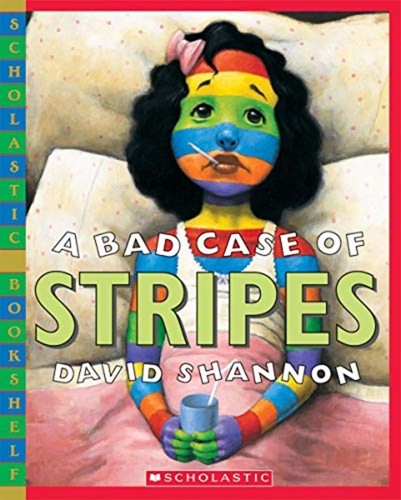
2. Tiara’s Hat Parade by Kelly Starling Lyons
“Tiara’s Hat Parade” is centered around young Tiara and her mother, who gives up her dream of owning a hat shop when another hat shop opens up nearby with much less expensive hats. Tiara ends up helping her mother in this illustrated children’s book that’s recommended for ages five and six.
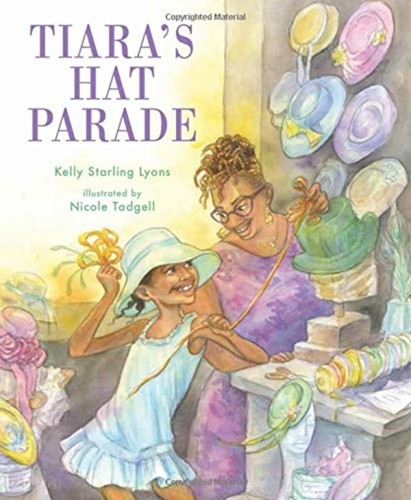
3. The Rainbow Fish by Marcus Pfister
Another classic, “The Rainbow Fish” follows one fish who has glittering scales and learns how to be less selfish and share with others. Throughout the story, the fish ends up giving away his famous scales and gaining friends. The book was first published in 1992 and is recommended for 4- to 8-year olds.
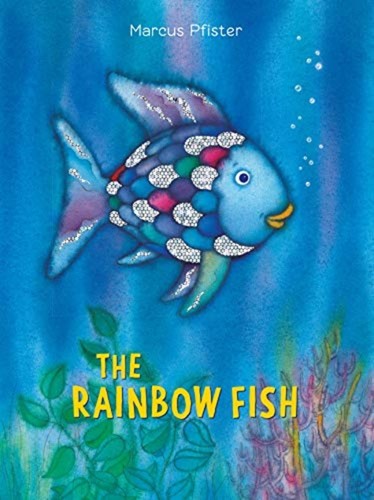
4. Don’t Touch My Hair! by Sharee Miller
In this picture book, Aria deals with strangers and strange creatures like mermaids and aliens always touching her curls until, one day, she decides that she’s had enough of it. The book is recommended for children who are 2- to 5-year-olds.
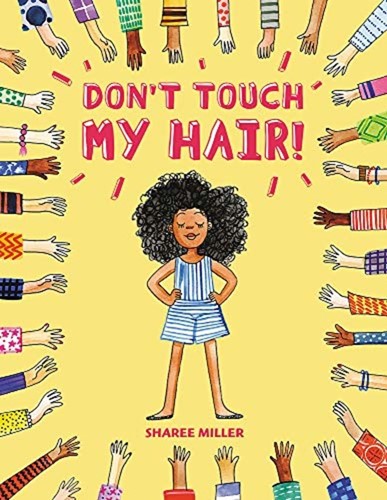
5. A Light In The Attic by Shel Silverstein
Shel Silverstein is well-known for his poetry, including collections like “Where The Sidewalk Ends.” Characters like Sourface Ann and Exactlywatt could keep kids entertained for years to come. Another classic that kids might love from Silverstein’s is “The Giving Tree.”
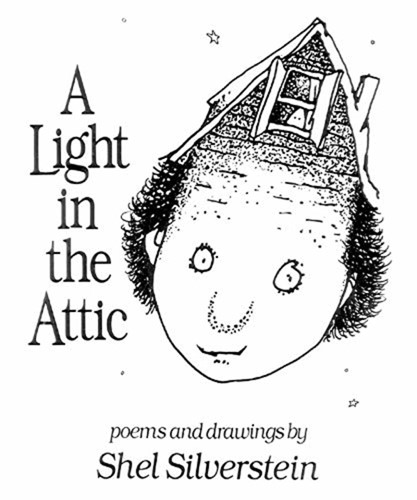
Happy reading!
--
This blog was written by Elizabeth Willen, library assistant at Charlotte Mecklenburg Library.

Our gift to you!
March 29, 2022
This promotion has ended.
It’s National Library Week and the Charlotte Mecklenburg Library wants to celebrate by giving you access to e-books and audiobooks with no waiting! We are gifting our customers a small collection of e-books and audiobooks that will be available instantly with no waiting in our OverDrive/Libby resource. This collection will be available April 4-9, 2022.
This week only the below titles will be available to check out with no holds. If you currently have one of these titles on hold, your hold will be immediately filled! You can check out up to three of these titles. Enjoy!
Adult selections:
- The Maid by Nita Prose (e-book)
- Black Cake by Charmaine Wilkerson (e-book)
- Atomic Habits: An Easy & Proven Way to Build Good Habits and Break Bad Ones by James Clear (audiobook)
- It Happened One Summer by Tessa Bailey (e-book)
- The Overnight Guest by Heather Gundenkauf (audiobook)
Youth selections:
- The Good Egg by John Jory (e-book)
- Dino-Easter by Lisa Wheeler (e-book)
- Big Nate in a Class by Himself by Lincoln Pierce (e-book)
- Each Tiny Spark by Pablo Cartaya (audiobook)
Teen Selections:
- I Must Betray You by Ruta Sepetys (e-book)
- They Both Die at the End by Adam Silvera (audiobook)
- Good Girl’s Guide to Murder by Holly Jackson (e-book)
Promotion ends April 9, 2022 at 11:59 p.m.
--
This blog was written by Amy Richard, library collections manager at the Charlotte Mecklenburg Library.
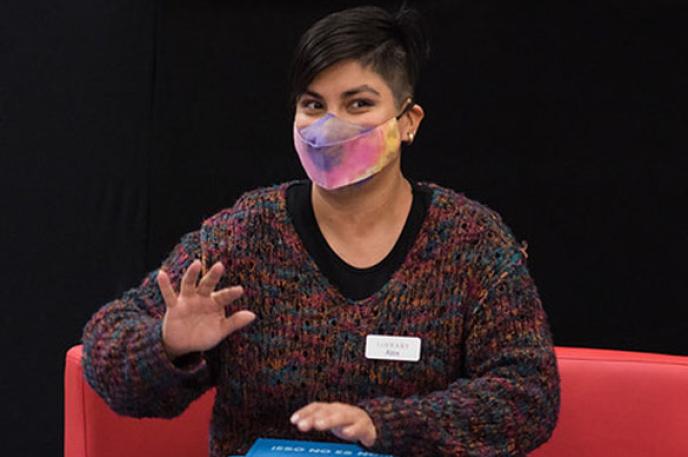
Digital Storyvine Returns for 2022
April 6, 2022
Since 1976, Charlotte Mecklenburg Library has been partnering with Charlotte Mecklenburg Schools (CMS) to introduce as many children in grades K-5 as possible to the artform of oral and traditional storytelling. A team of Library staffers across all 20 Library branches raise their hands each May to become the Frontline Storytellers, heading into CMS partner schools to tell stories from all over the world to thousands of Charlotte school children in a single day.
Last year this special event transitioned online to our whole community (not only students in CMS) for a full day of traditional oral stories and this year it returns bigger and better than ever!

On Thursday, May 5, 2022 from 10 a.m.-3 p.m., there will be more than 10 different storytellers sharing traditional tales on the ImaginOn Facebook page and Library's YouTube channel every 30 minutes from Africa, Ukraine Panama, Bali, Japan, China, The Middle East, Italy, Appalachian and Native American traditions, and more!
DOWNLOAD OUR CALENDAR FOR A FULL SCHEDULE OF STORIES AND VIEWING LINKS
If you’re a teacher or educator who would like to celebrate with us, we’ve created a interactive and educational activity HERE to learn about each story’s country of origin.
On behalf of the Charlotte Mecklenburg Library, we invite you to join us for this full-day digital storytelling experience!
--
This blog was written by Elyse Barrier, library program coordinator.

